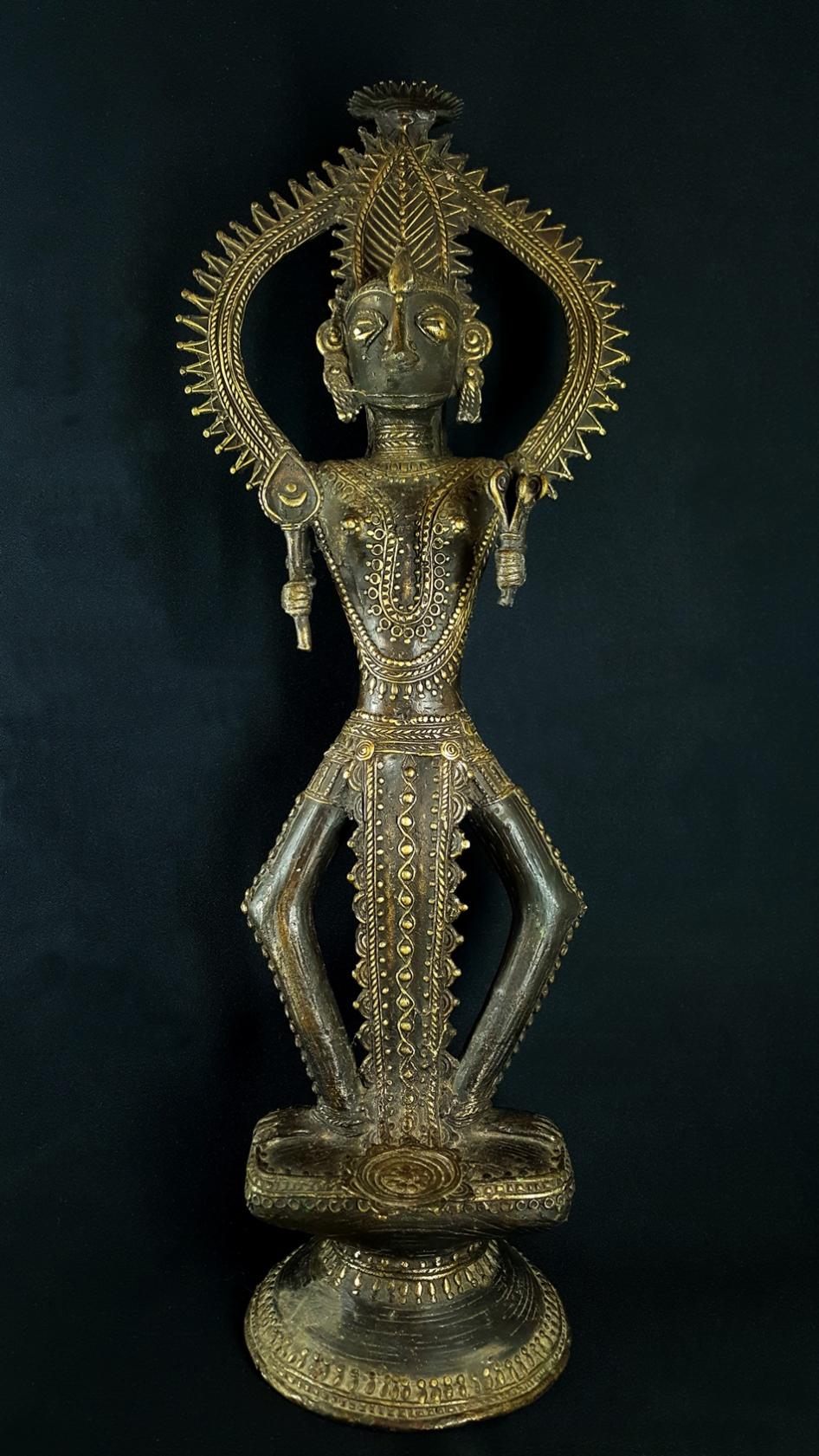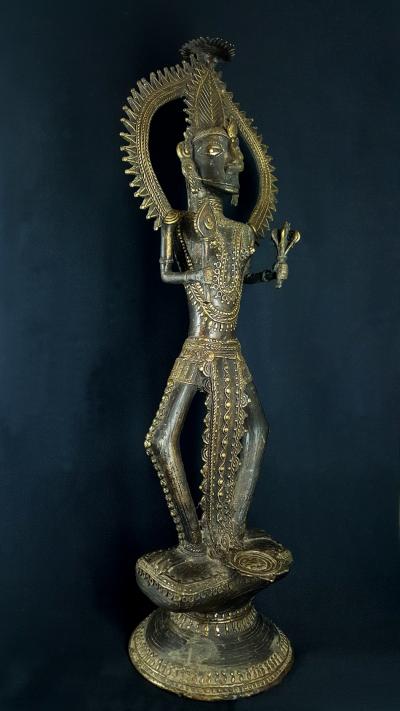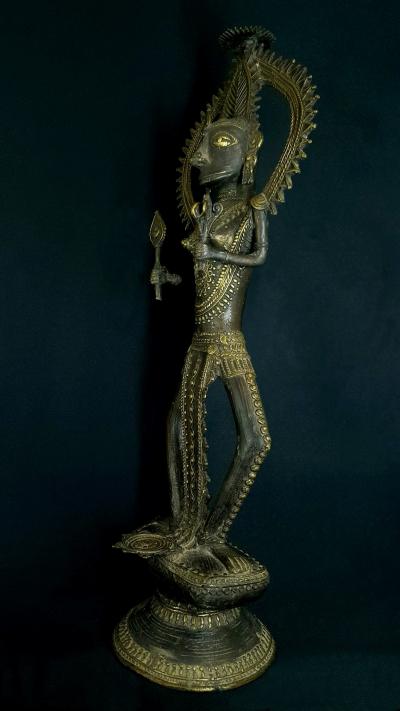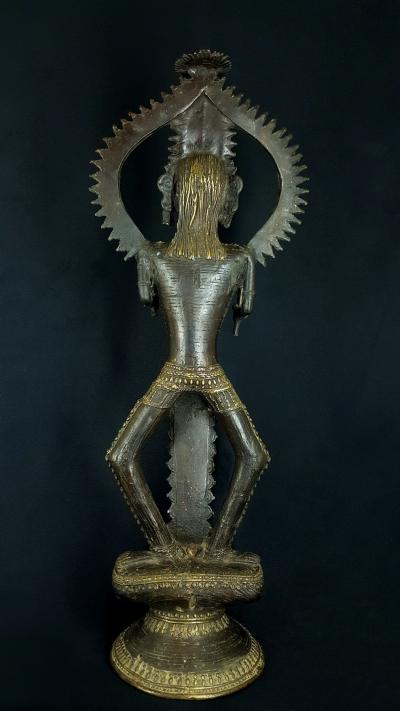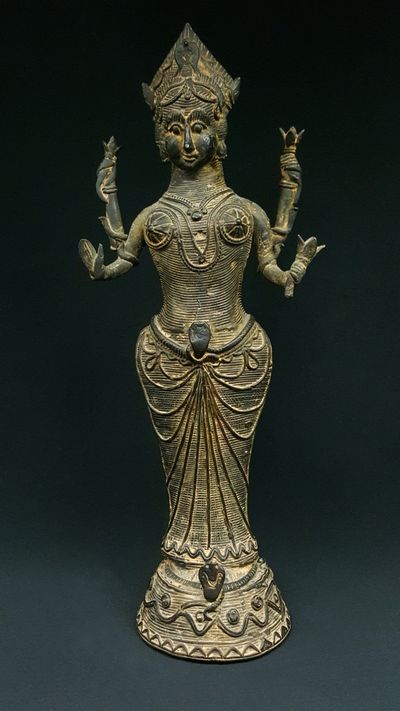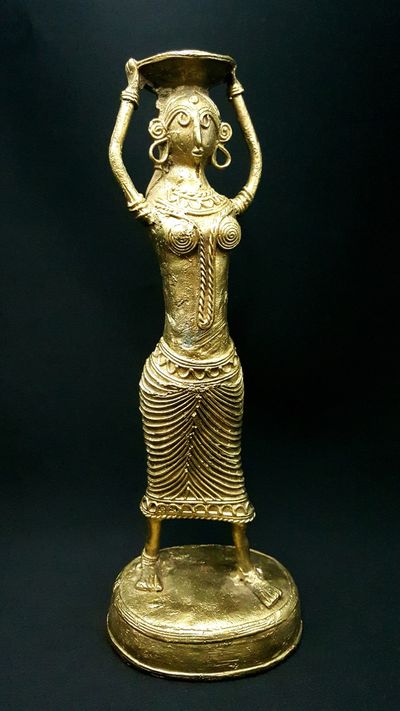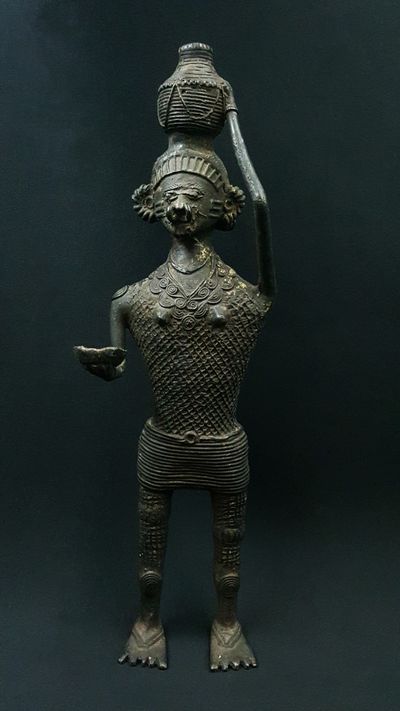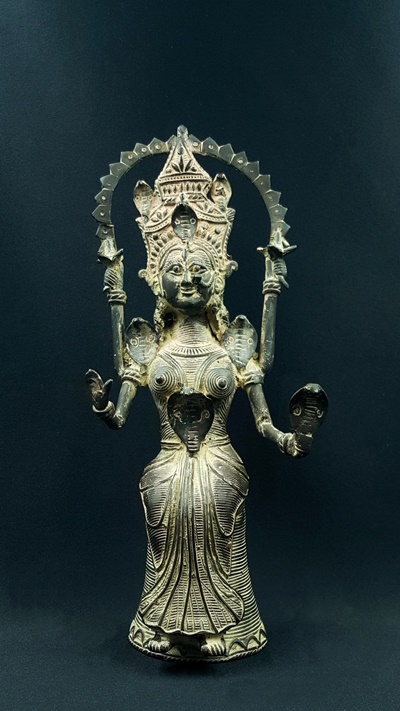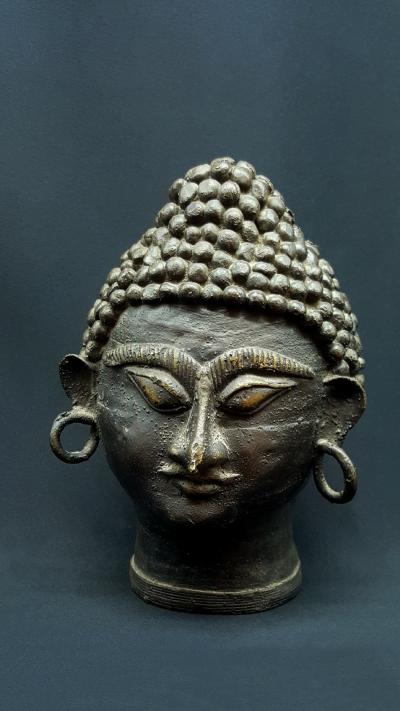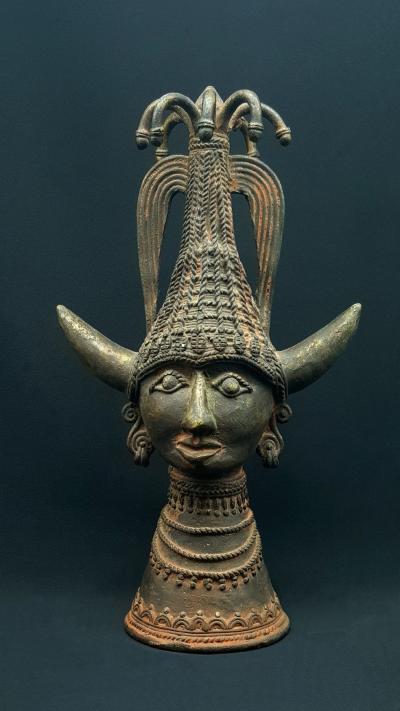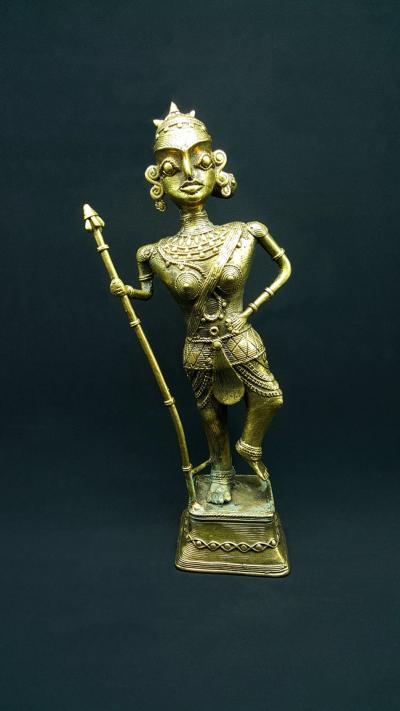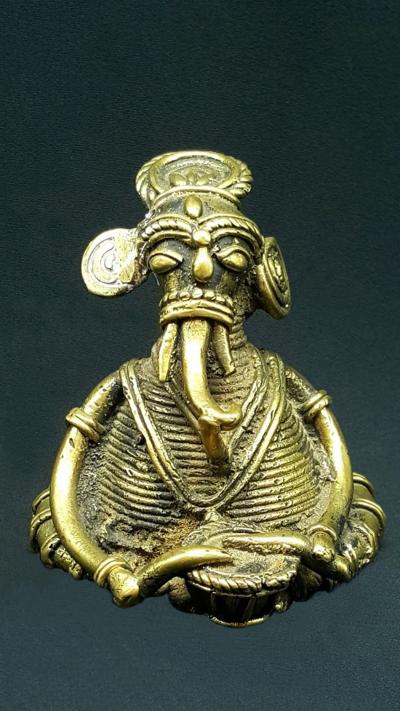Danteshwari statue
Nourriture et fertilité
€890.00
Rare statue tribale de Danteswari : une des 52 représentations issues du corps de Sati, elle symbolise la nourriture et la fertilité. Remarquable travail tout en finesse. En savoir plus...
Hauteur : 46.5 cm
Poids : 3.280 Kg
Art sacré
Cire perdue
Origine : Chattisgarh - Inde
Livraison gratuite UE, Norvège et Suisse
Description
Les Bastars
Le Bastar est un district de l'Inde du Sud dans l'État de Chattisgarh, il fût un royaume indépendant du 14° siècle jusqu'à son intégration à l'Inde en 1948.
La population tribale représente 70% de la population du district de Bastar: les principales tribus sont les Gonds - les Abhuj Maria et les Bhatras. La plupart ont gardé leur tradition (art culinaire, vestimentaire, fêtes...) et leur religion animiste. Les tribus vivent encore principalement de l'agriculture et des ressources tirées de la forêt (chasse, plantes médicinales, bois...).
Certaines tribus se consacrent à la réalisation de statues en laiton depuis plus de 4000 ans. Cet art, que l'on retrouve aussi dans les États du Madhya Pradesh, de l'Odisha, dans l'Ouest Bengal, du Bihar... est appelé Dokra.
L'art Dokra : un savoir millénaire dans la fabrication de statues
Cet art tribal indien artisanal n'a pas changé depuis des millénaires (+ de 4000 ans) et la technique utilisée est toujours celle de la cire perdue : un modèle grossier en argile est réalisé puis recouvert de cire par l'artiste qui va lui donner sa forme définitive avec ses détails. L'ensemble est à nouveau recouvert d'un mélange argileux puis chauffé dans un foyer ouvert où un alliage cuivreux sera coulé.
Les objets produits par les artistes Dokra peuvent être de nature usuels : coupelle, bougeoir... des instruments de musiques (cuivres), ou bien artistiques tels que des bijoux, des animaux : chevaux, éléphants, tortues..., des statues d'hommes et femmes représentant des scènes de vies quotidiennes et des divinités hindous adoptées par les tribus : Ganesh, Lakshmi, ...
Histoire
Danteshwari est la déesse mère du Bastar, elle est particulièrement fêtée pendant le festival Dussehra qui, en septembre/octobre dure 75 jours (au lieu d’un jour dans le reste de l’Inde) ! Toutes les tribus l’honorent au même titre que les déités locales appelées Anga Deo (animisme) : Danteshwari est la déesse tutélaire des anciens rois car elle a protégé son fondateur au 14°siècle lors d’une guerre contre des envahisseurs.
Posture : debout, représentée de face, Danteshwari veille. Les jambes écartées, dans une position d’accueil, sa présence impose. L’attitude est hiératique voire figée, il se dégage une grande autorité de sa posture. Danteshwari protège ses enfants.
Sa tête est auréolée de la roue de feu : roue de l’univers qui symbolise le cycle de vie :naissance/destruction. Elle représente aussi le feu qui illumine, qui féconde ou qui détruit l’ignorance.
Dans ses mains, elle tient les symboles de la nourriture, le grain, la fertilité et l’autorité.
Ses riches parures évoquent les temps des cérémonies, les colliers sont richement décorés mais discrets, sa coiffe est imposante. Le travail de ciselure est raffiné.
Magnifique et rare statue de Danteshwari, imposante, représentative de l’art tribal : Danteshwari, la déesse mère, la Shakti, veille. L’ensemble de la sculpture dégage une grande force qui implique le respect. Une plongée dans le monde tribal Bastar du centre de l’Inde : invitez le sacré dans votre intérieur.
